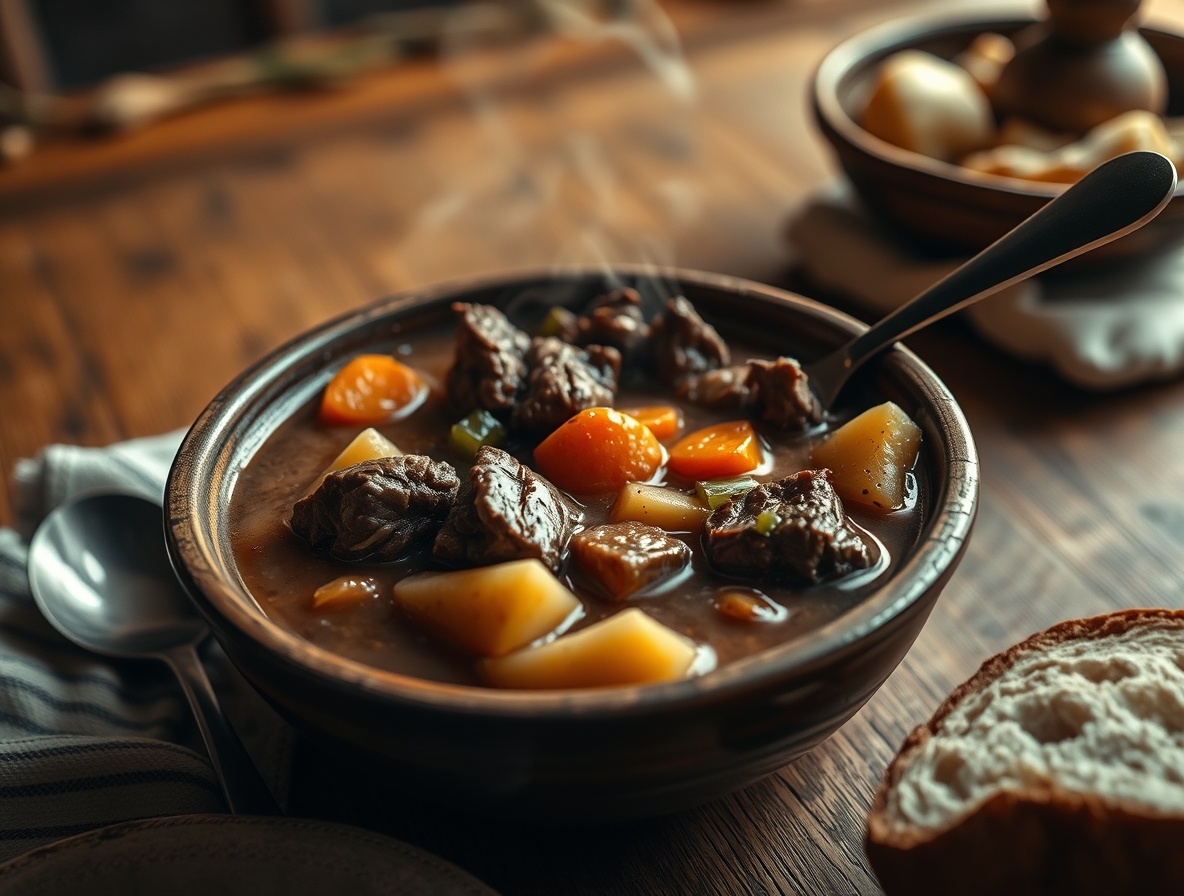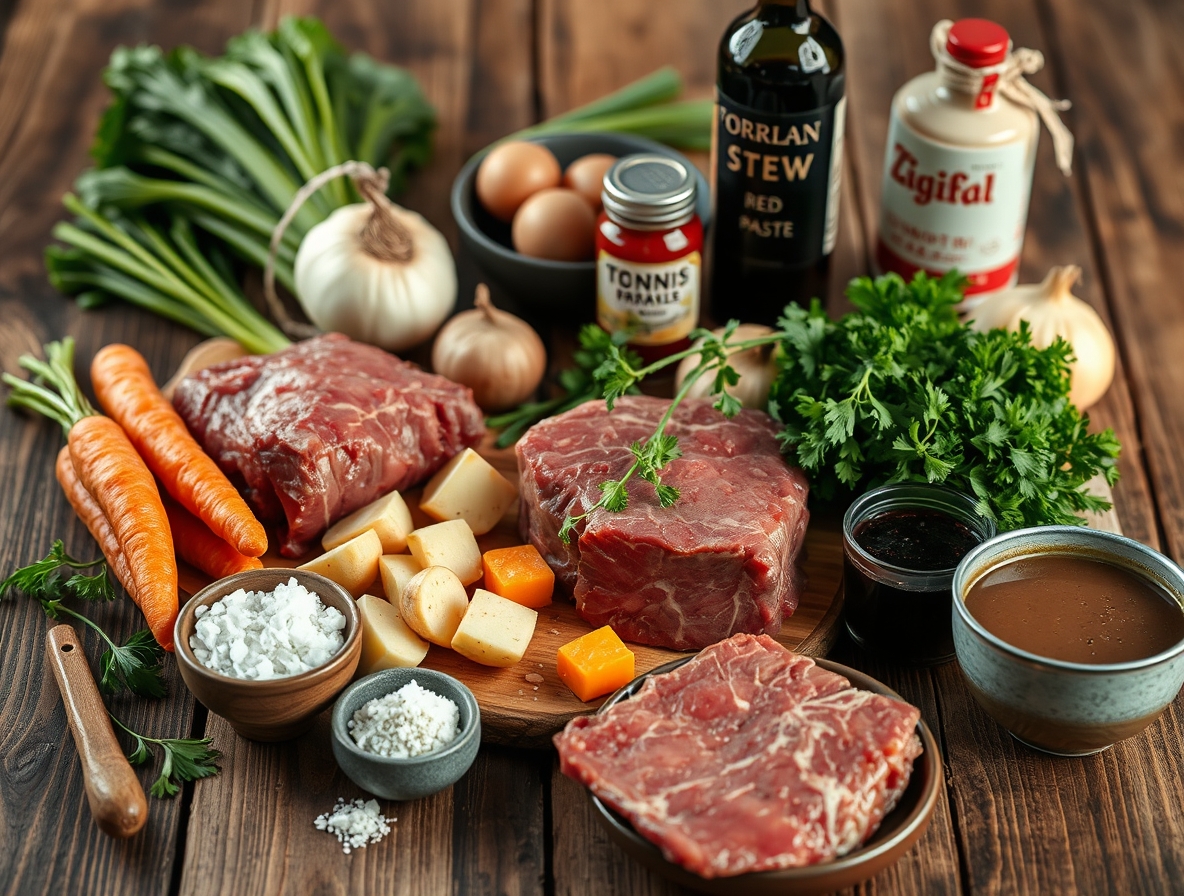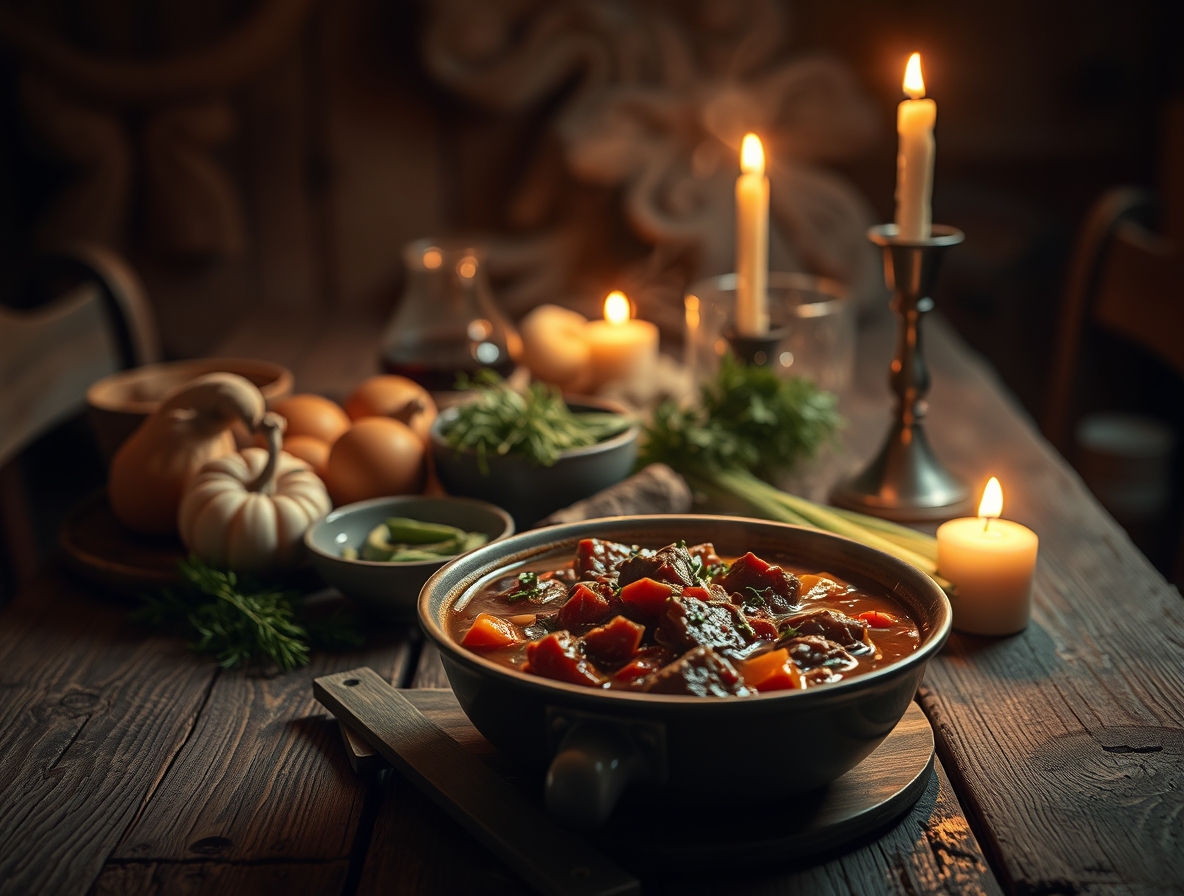Mastering the Art of Beef Stew: Ingredients, Cooking Times, and Techniques

Introduction
Did you know that beef stew has been a beloved dish for centuries, enjoyed across various cultures for its hearty taste and simplicity? This guide will teach you how to craft the perfect beef stew by focusing on the essential ingredients, cooking times, and techniques to ensure a delicious outcome every time you cook. Beef stew is not only comforting but also a versatile dish that can be customized to your taste. We'll cover the basics of ingredient selection, the best cooking practices, and how to achieve the rich flavors that make this dish a classic.
By the end of this article, you'll be equipped with practical tips to enhance your beef stew game, making your meals more enjoyable and satisfying for both you and your loved ones.

beef stew ingredients
To make a classic beef stew, you need a few staple ingredients. Understanding their role in the dish will help you make better choices during preparation.
-
Beef Chuck: Choose well-marbled beef chuck for its balance of meat and fat, ensuring tenderness and flavor.
-
Vegetables: Carrots, potatoes, and celery are traditional choices, bringing texture and sweetness.
-
Broth and Stock: Use beef broth or stock as a base to enrich the stew's flavors.
-
Tomato Paste: Adds depth and a slight acidity which enhances the flavors.
-
Herbs and Spices: Bay leaves, thyme, and black pepper are must-haves. Fresh herbs add a bright finish.
-
Wine or Beer: Both can deepen the stew's flavors, but they're optional depending on your preference.
Pairing Ingredients for Optimal Flavor
Combining the right ingredients elevates your stew from good to great. Always consider how each component interacts within the pot. For example, onions caramelize to add sweetness, while garlic adds a spicy note. The combination of carrots, potatoes, and celery rounds out the flavors with familiarity and comfort.
Mastering Cooking Times
Cooking times are crucial at each stage, as they affect both flavor and texture.
-
Browning the Meat: 10-15 minutes
-
Sear the beef in batches over medium-high heat. Browning locks in flavor with the Maillard reaction, a key step for depth.
-
-
cooking beef stew: 2-3 hours
-
Slow-cook the stew on low heat until the meat is tender. A longer cooking time helps meld the flavors.
-
-
Final Touches: 15-30 minutes
-
Add vegetables about 30 minutes before completion to avoid overcooking.
-
Always start with well-marbled beef and caramelized onions; they lay the foundation of taste.
Beef Stew Techniques
Mastering a few cooking techniques can transform an ordinary beef stew into something extraordinary.
Browning the Beef Correctly
Proper browning is more than just cooking the surface. It’s about building a flavor base. Before searing, pat the meat dry with paper towels to ensure even browning. Do not overcrowd the pan, as this causes steaming rather than searing.
Layering Flavors
Building stew flavor involves layering ingredients effectively. Start with onions and garlic, then add your beef, followed by deglazing the pot with some wine or broth to lift flavor-packed bits stuck to the bottom. Add tomato paste and allow it to cook slightly to remove its raw edge.

Thickening the Stew
For desired consistency, consider incorporating different thickening agents:
-
Flour: Pre-coat beef cubes for a lightly thick stew.
-
Cornstarch Slurry: Mix cornstarch with cold water and pour gradually while stirring.
-
Simmer Reduction: Letting the stew simmer uncovered allows evaporation to thicken naturally.
Tips for Serving Beef Stew
Presentation and pairing can make your stew more appetizing and enjoyable.
-
Serve in Warm Bowls: Warm bowls keep the stew from cooling too quickly.
-
Garnish Thoughtfully: A sprinkle of fresh parsley or thyme adds color and freshness.
-
Perfect Pairings: Serve with crusty bread or over creamy mashed potatoes for a complete meal.

Common Pitfalls and Solutions
Even experienced cooks can encounter some common challenges when making beef stew. Here’s how to address them:
Tough Meat
If your meat turns out tough, it usually means the cooking time was too short. Ensure you cook low and slow for tender results.
Bland Taste
A bland stew can be revitalized with extra seasoning or a splash of wine, vinegar, or lemon juice. Always taste before serving and adjust accordingly.
Overcooked Vegetables
To avoid mushy vegetables, add them later in the cooking process. Note that different vegetables have varying cooking times.
Conclusion
In summary, perfecting beef stew involves a balance of quality ingredients, careful timing, and effective techniques. With the strategies discussed here, you can create a meal that is both tasty and fulfilling.
Next, gather your ingredients, pay attention to the cooking details, and enjoy the heartiness of a perfect beef stew. Happy cooking!